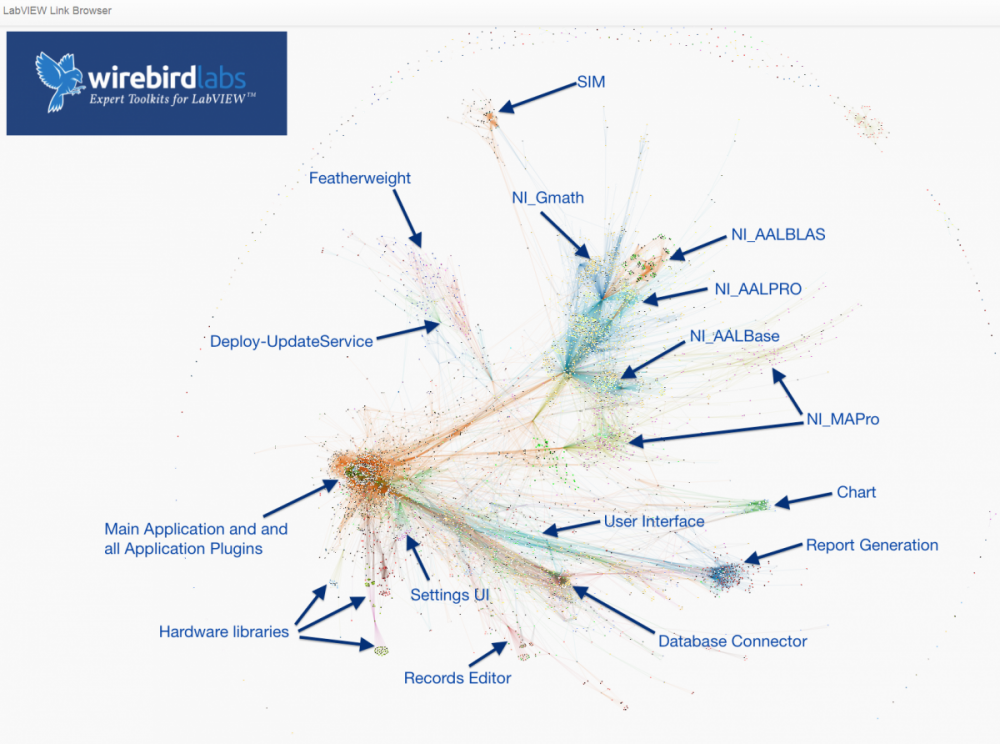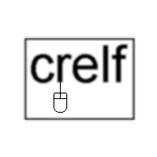Leaderboard
Popular Content
Showing content with the highest reputation on 12/04/2014 in all areas
-
You do know that your managers will probably read this, right? I think consolidation is your key argument in this kind of environment. The premise is that it is cost effective to rationalise/consolodate the myriad of versions into one version for production benfits. As NI don't sell any other versions than the latest, that means upgrading to 2014 at time of writing. Shame eh? First step. Talk to the NI rep and find out how much it will cost to consolidate all the versions and how much discount he can apply (important for the bean counters later). Push him hard as he will want the sale as much as you want to upgrade so he is a great ally here and you can use some of his sales BS when you argue later internally. Get him to give you two quotes. One with the prices for upgrading individually (which is a single seat full licence per person-don't forget all your addons) and the other with his best offer. This is the accountancy "saving" you can show the bean counters later Make sure an SSP is also included as an optional line item. Then onto the convincing Espouse the merits of a single platform and the advantages of having a single version in terms of maintenance, deployment and upgrading test facilities. A powerful argument here for production is downtime. Center the argument around cost saving in terms of product not being produced (rather than programmer effort -you are cheap, product is not ). Point out that whilst upgrades are being tested; they have to be tested for each version (multiplying test station downtime by LV versions). The corollary is that a single platform only needs to be verified and signed off once and can be deployed to multiple stations (Replication of effort across multiple disciplines). Really emphasise the effective cost of sign-off too. That multiple disciplines must be involved so deployment resource is multiplied outside of just a puny software engineer and may involve expensive resources like quality engineers, production and maintenance engineers as well as the great god Project Manager. Basically you argue that everyone (production, quality, management, maintenance, bottom line) will benefit if they upgrade and look what a fantastic offer NI have come up with for a one-time consolidation package (show the two quotes) I think you get the gist. Once you have argued those kinds of points with management and techie types, then you can woo the bean counters with all the free goodies you will get that they would have to buy anyway but you can get for free if they do this "one time consolidation" like "Database Connectivity, Desktop Execution, Report Generation, Unit Test Framework, and the VI Analyzer Toolkit." (thanks for the list Hooovahh ) Show them the quotes as what they have to pay if they do it now or when they have to later. Explain that if they get the SSP too, we will not have to worry about this again next year and we can roll it on ad-infinitum (this is a different budget ) . Any counter arguments, steer towards the SSP. This is your sacrificial "feature" which you may get if you are really smooth, but really not that bothered if you don't. Just make sure you steer all financial arguments towards buying or not buying that to deflect from consideration of the upgrade. I hate politics.2 points
-
Can we get rid of LVLIB “libraries†then? Or at least rename them as they don’t match the English meaning of library? Libraries are not "collections of books that cannot be read except all at onceâ€. And can we have an actual library construct that does collect related VIs with namespacing and scoping? Why don’t we have proper libraries in LabVIEW?!?2 points
-
Yeah, it seems that the server has been reorganized. Might take a while to figure out the new places. However most files should be in similar locations under '/support' instead of '/support/softlib'. (example: '/support/softlib/labview/labview_runtime' is now '/support/labview/runtime') No, everything should be alright on ni.com/downloads, however it is easier to directly access the FTP server and fetch files, than clicking through a couple of pages.1 point
-
LLBs and LVLibs solve different problems (and create different problems), and are not interchangeable or really related beyond sharing the word "library" in their acronyms. Here are some characteristics and comparisons of the two: LLB provides physical packaging containment of members, and does not address namespacing (nor scoping). LVLIB provides namespace containment of members (and also scoping), and does not address physical packaging. Both LLB and LVLIB impose static linkages that can be incidental and undesirable. These negatively affect load times (IDE and run-time), build times, and compile times. Anecdotally, it's greater than O(n) time complexity, especially when circular linkages exist between multiple such hierarchies, and most especially if the library hierarchy is nested (e.g., LVCLASS within an LVLIB, or nested LVLIBs) An LVLIB can be built into an LVLIBP. An LVLIBP is different from an LLB in that an LLB packs writeable, cross-platform* VIs capable of mutating to future LabVIEW versions, while an LVLIBP is a read-only, platform- and version-specific byte code distributable (which may contain the block diagram for debugging, except still remaining platform- and version-specific). An LLB may be used to pack libraries/plugins for deployment as application plugins, or as reusable libraries in development. An LVLIBP effectively is only used for the former. Neither LVLIBP nor LLB can pack non-LabVIEW-source filetypes as resources. Be mindful to account for both renaming/name-mangling resources, and also changes in relative path. LVLIBs (and LVLIBPs) render nicely in the LVProj tree, while LLB members appear indistinguishable from POVIs (plain ol' VIs). LLBs cannot pack two VIs of the same filename. This prevents packaging multiple LVCLASS hierarchies that use dynamic dispatch methods. This represents a few LabVIEW design limitations: 1) LLB's lack of an internal directory hierarchy for organization and packing of two filenames, and 2) LVCLASS using OS filename as the only unique identifier for method identification in a class (filename represents a good default value, but we need one more degree of indirection as a field within the LVClass XML; it's another discussion why this is so highly desirable to decouple source from OS convention). For actively-developed libraries, LLBs are bad because they exist a monolithic binary file. LVLIBs are bad because there exists no diffing or merging capabilities (this also applies to LVPROJ, LVCLASS, XCTL, XNODE filetypes. This is especially insidious, because popular DVCS clients autodetect the file format as XML and think "Aw yeah dude, I got this!" MERGE FAIL. Corrupted source. Be sure to turn off this autodetection for these filetypes.) LVLIBs can apply icon overlays to members. LVLIBs may be carefully designed to include strategic static linkages, including non-LabVIEW source files. This is one strategy to avoid managing the "Always Include" section of AppBuilder for distributables, especially as a convenience for end-user-developers of re-use libraries. But this fails by default because of the setting "Remove unused members of project libraries". Unchecking that often causes failure to build for non-trivial-sized applications linking to gargantuan LVLIBs shipping in vi.lib and as add-ons. So, the strategy may or may not work (it's coupled to whether or not you're keenly aware of and properly managing all application static dependencies) The reason I want to like LLBs is their ability to provide packaging constructs that provide higher performance on actual hardware. It's faster to load 1 file of size 100 units than 100 files of size 1 unit. It's also a more convenient distribution format -- a single file. (Also, I can't think of another language that effectively enforces a 1:1 relationship between method and physical file. LabVIEW requires substantially more clerical work to develop and refactor, for this reason) The reason I want to like LVLIBs is to enable namespacing and scoping beyond the LVCLASS level. Though, this namespacing always comes with the cost of static linking, which is perhaps the #1 problem for codebases of non-trivial size (do you see busy cursors while editing and wiring? long build times? load times? type prop errors? corruptions from application refactoring? heartache and heartburn generally?) Also, LVLIBP is neat in practice, but so narrowly scoped to specific deployment scenarios where it's acceptable to target version- and platform-specfic targets (version-specificity is definitely the bigger problem. every 12mo, we are afforded the opportunity to choose between obsolecense/migration/revalidation or just-plain-outdatedness). And without arbitrary namespace composition (namespace B and namespace C may both declare using namespace A; with namespace A unaware and none-the-wiser), it's not necessarily a compelling feature to begin with. (Corollary: an LVCLASS's ability to namespace and scope its members is desirable and good; but it becomes less necessary and more-likely-incorrect to continue namespacing and scoping at higher abstraction levels without namespace composition) Do LVLIBs Scale? Using LVLIBs in source on an actively-developed project raises barriers to both team scale and application scale. The cost of not using them is loss of scoping, which is avoided through communication and convention, and easily-detected if any actual problem were to exist. Another cost is loss of namespace, easily avoided through filenaming conventions (which is incidentally an industry standard on the web; prefixing library APIs with library-specific prefixes to avoid collision). Said another way, ROI diminishes and reverses to negative at scale, and opportunity cost has simple workarounds. I choose the opportunity cost. But... LVLIBPs! Another apparent opportunity cost of avoiding LVLIB in source is the inability to have LVLIBP as a distributable. Though, if you treat build/distribution as a second toolchain from the dev toolchain, the dev source can remain unencumbered by LVLIB, which is only added as part of the build process. I have mixed feelings on ROI here, but if LVLIBP makes sense for you, consider this strategy to make your dev experience noticeably more pleasant. Here's a real-world case study. This is from a Wirebird Labs client who gave permission to release this screenshot of a bird's eye view of their application analyzed using Links. What we're looking at in the screenshot below is an application with over 8000 application VIs (not including third-party dependencies). Libraries are identified by labels. Nodes represent a source file (mostly VIs, but also including LVLIB and LVCLASS and CTL), and connections between nodes represent static links as detected by the LabVIEW linker. This is a static screenshot of the application, but while running the physics engine lays out nodes as a force diagram. The strength of the force is based on number of static links existing between nodes, and a negative force is applied to nodes with no static links. This causes nodes to form clusters in space where strong coupling exists. What is the value of analyzing the application like this? Here is a list of issues we needed to solve: It took a long time to build. This made iterating costly, both in time and morale. Oftentimes, the build failed (anecdotally, a fresh warm boot of LabVIEW helped) The IDE was painfully slow during development; the cursor continually was "waiting" during wiring operations. The way we solved both problem was simply by taking a pair of "scissors" and snipping links between nodes. The types of links that we snipped were these incidental links introduced by packaging and namespacing facilities in LabVIEW: removing LVLIBs altogether removing VIs from LLBs calling concrete instances of polymorphic VIs rather than the parent removing public type definitions and utility VIs from LVCLASSes Within a couple days, we went from "kick off a build and go grab lunch" to "kick it off and get a coffee". The application and application framework had not changed to see these improvements; just the logical and physical packaging of dependencies. (In addition to solving the main performance pain points, additional areas for architectural consideration are easily visualized; that's beyond the scope of this conversation) Without LVLIBs, how do I avoid name collisions? I prefer this filenaming convention: Project-Class-Method.vi or Application-Class-Resource-Action.vi ... or generally, LeastSpecificNamespace-...-SpecificThing-...-VerbActingOnASpecificThing.vi For instance, Deploy-UpdateService-CheckForUpdates.vi or FTW-JSON-Deserialize.xnode. The name of the owning class just drops the -Method postfix. Is it ideal? It's neither terrible nor great. Some benefits are that filenames sort nicely, and it's easy to spot anomalous linkages. Semantic naming makes it easier for development tools outside the IDE (SCC client and provider, build toolchains). One downside is that your hand is forced on naming Dynamic Dispatch methods in classes (again, I desire to see this coupling separated by a degree of indirection in future LabVIEW versions). Conclusion? This area of LabVIEW does not have a general solution or general best practice. Be aware of tradeoffs of different strategies, and ensure they map successfully to your application space, stakeholder's needs, and team's sanity. Standing offer: Send me a message if you feel some of the scaling pain points: busy cursor while wiring build times lasting longer than 10min mass compile times lasting longer than 10min LVProj takes longer than 1min to load and within 2hrs of screensharing I reckon we could substantially improve your LV dev experience. I'm interested to further build tribal knowledge and provide feedback to NI on taking LabVIEW applications and teams to scale.1 point
-
I did. (That is, after years and N00's hours investigating LVLIBs in the context of namespacing/distribution/building/linking/encapsulation/scoping/reuse/load time/dependency management and so forth. James, I am not surprised if you independently draw the same conclusion, and I'm interested to hear if you conclude otherwise.)1 point
-
1 point
-
Agreed, and I said as much in my post. The transition from FGV to AE is a variation of the paradox of the heap. When does FGV become an AE? When is a heap of sand no longer a heap? If we're going to make a distinction between FGV and AE (and I think we should since the names convey very different ideas) then we need to choose an arbitrary break point. I chose that break point because not coding myself into a corner is one of my primary requirements, and adding methods other than get/set is the beginning of that trap. Once you create a public interface for the AE using wrapper VIs, the fact it is implemented with an AE is irrelevant. You don't care (or shouldn't care) that the wrappers use a non-reentrant VI internally or that the data is stored on an uninitialized shift register. You only care that all the public interface VIs refer to the same data and access during read-modify-write operations is controlled correctly. I don't (never did, really) but enough people still use them that it makes sense to understand the differences between them. (At the very least the discussion gives me some insight into how other developers think.)1 point
-
I disagree. Here's how I differentiate between them. Normal Global - A data storage container. Functional Global - A data storage container with get/set methods, allowing the developer to check data validity prior to getting or setting the value. Action Engine - A functional global that adds methods--other than get/set--to operate on the data. Essentially when a third method is added to a FG it becomes an AE. I agree there's a lot of fuzziness between FGs and AEs, and my definition is as arbitrary as anyone else's. I chose that as the defining characteristic because adding methods other than get/set to a FG is taking the first step down a path that easily leads to heavy code debt. The con pane puts a practical limit on the number of methods an AE can support. In theory you can jam every possible input and output into clusters and have an infinite number of methods; in practice it makes the AE much harder to use than other implementations. Restricting the methods to get/set keeps it simple.1 point
-
Semantics aside a FGV can have race conditions, just like a normal global. But a FGV gives me the ability to perform other functions, other then just read and write. Because I don't know how my applications needs will change in the future I never use native globals, and only FGV. Lets say I'm storing an array of values, well I can have my method on the FGV "Read" "Write" and "Average" a native global can't do this without extra code which isn't that big of a deal but I prefer this method. Other functionality that can be done is stuff like WORM. Where a global can only be written to once then it will generate an error if it is written to again. Many of the pitfalls of a native global exist in these other VIs, but allowing added functionality, and also adding other debugging tools helps to make sure you don't shoot your self in the foot. But it can still happen.1 point
-
Another option is a current value table (also known as a currnet value repository) using variant attributes (discussed a little here). We have an internal reuse library that wraps the get/set methods (think polymorphic) and includes other functions like write-to/read-from file, search for tags using wildcards, probes, etc. There's also a CVT example from NI here - it's strictly-typed, but it might give you some ideas.1 point









